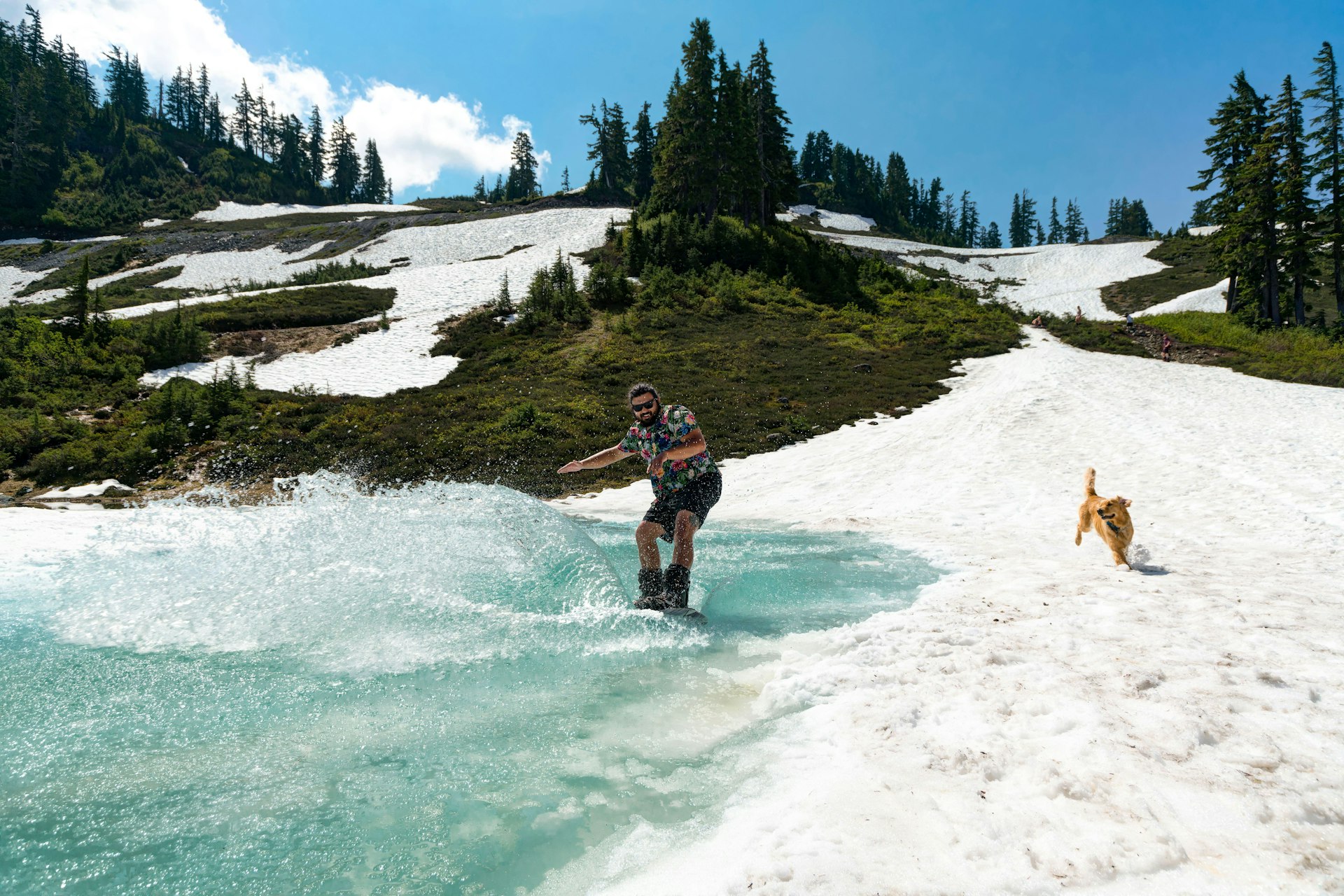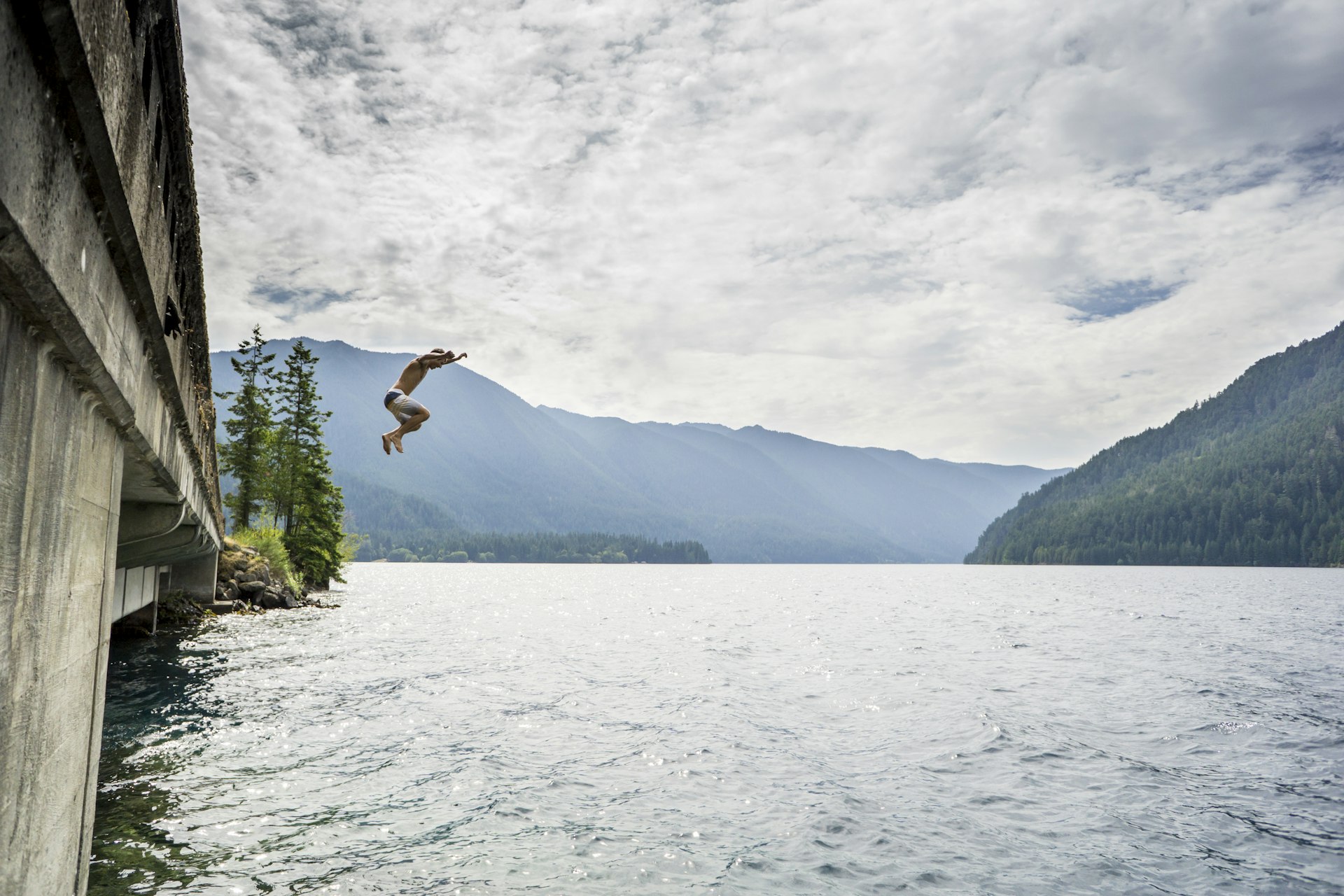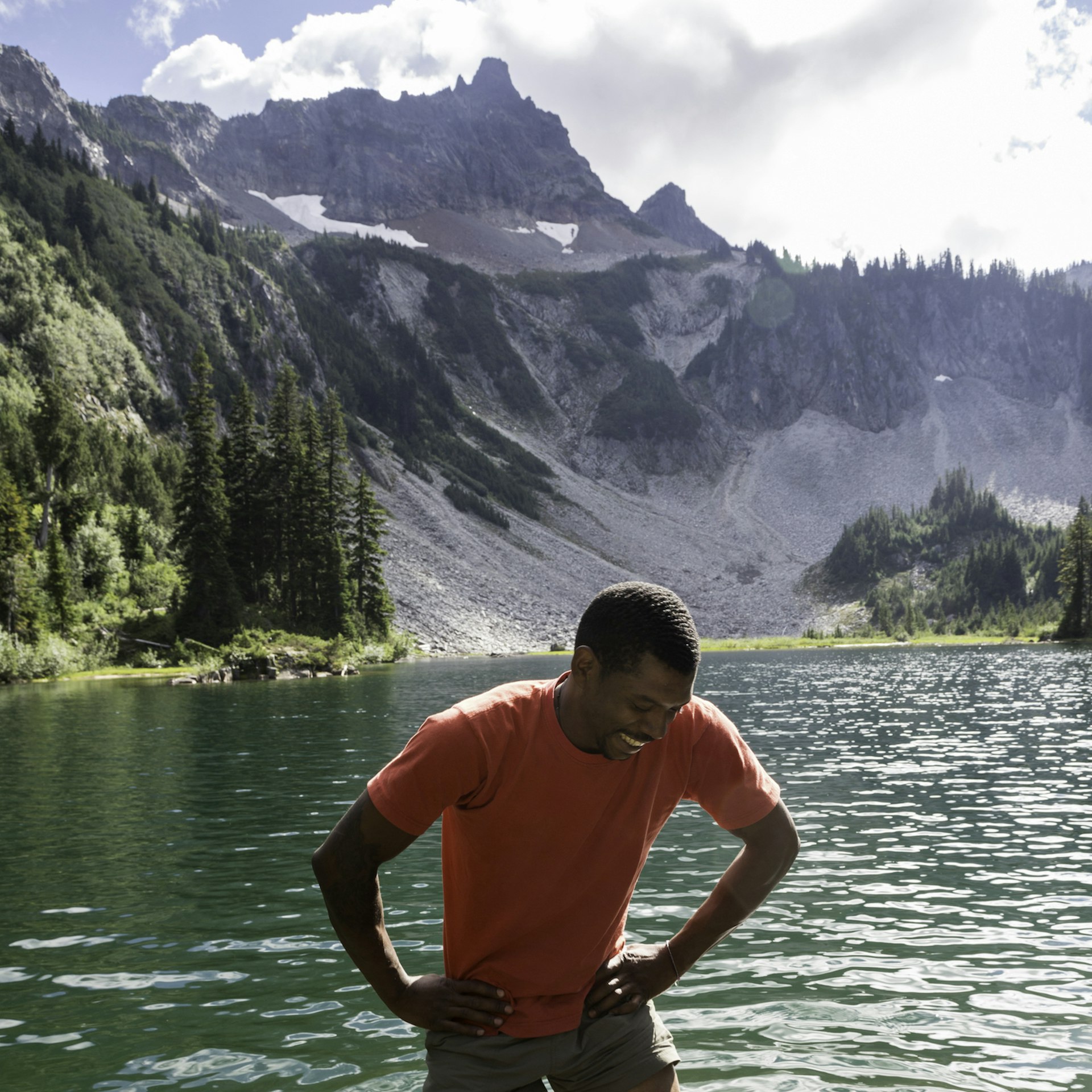Generously endowed with an abundance of protected federal land, the state of Washington is home to a trio of stupendous national parks.
There’s Mt Rainier, famed for its eponymous volcano; Olympic, a striking green wilderness with a little-touched roadless interior; and North Cascades, a crinkled web of mountains that could be a small slice of Alaska broken off and towed south.
Complementing these three headliners is a less-heralded collection of national historic sites and parks, including the San Juan Islands and homages to the 19th-century Klondike Gold Rush and Lewis and Clark’s epic trek across America.
Here’s how to get the most out of Washington’s national parks.
1. Mt Rainier National Park
One of the country’s most emblematic national parks, Rainier is anchored by a huge, glacier-encrusted stratovolcano that stands sentinel over the city of Seattle, 70 miles away. While popularly known as Mt Rainier, it’s also called Tahoma by the area’s Indigenous Pallyup people.
US park pioneers recognized the area’s beauty and environmental importance early on – Rainier was the nation’s fourth national park when it was created in 1899 by President William McKinley. A strong historical element remains in the form of several old buildings: handsome Paradise Inn, the “parkitecture”-style Longmire buildings and the Camp Muir Mountain Refuge, all constructed between 1916 and 1929 and designated National Historic Landmarks.
The park is famed for its glaciers (it has 25), subalpine flower meadows, tracts of old-growth forest and – most of all – the dazzling 14,417ft mountain that sits in their midst. Mt Rainier is the fifth-tallest peak in the Lower 48, and the highest by prominence.
Hiking is the way most visitors experience Rainier. A well-marked web of trails ranges from the mega-adventurous (the 93-mile Wonderland Trail, which completely circumnavigates the mountain); the accessible (the 0.8-mile Trail of the Shadows loop); and the eye-poppingly beautiful (the five-mile Skyline Trail, which meanders through gorgeous flower meadows).
Camping and wildlife watching are enduringly popular. At several drive-in campgrounds, you might spot some of the abundance of fauna, including black bears, elk and mountain goats. The park is also an important nexus for mountaineering: some 8000 climbers attempt to ascend Rainier yearly, with about half successfully summiting.
Visiting Mt Rainier National Park: A 2-hour drive from downtown Seattle, Rainier is easily accessible by car and has a basic network of roads, climbing to 6400ft at Sunrise, the highest point. Of four main entrances, Nisqually in the southwest is the most used. While there’s little in the way of public transport, it’s possible to see the park’s highlights on a day-long bus tour from Seattle.
Entry is $30 per vehicle. You can stay overnight in one of four campgrounds (one of them tent-only) and two historic lodges.

2. North Cascades National Park
One of the least-trafficked national parks outside of Alaska, North Cascades gets only around 20,000 annual visitors thanks to its isolation and uncompromising wilderness credentials. This is all good news for seekers of solitude, gung-ho adventurers and ardent naturalists, who together make up the majority of the small trickle of visitors.
Within this park’s boundaries, you’ll find the highest level of biodiversity in the US. The park is split into two sections, separated by the Ross Lake National Recreation Area, a narrow ribbon of land bisected by Hwy 20 (the park’s summer-only access road) that’s the location of two major hydroelectric dams that provide electricity for Seattle.
The north section of the park is the most impenetrable, favored mostly by serious mountaineers and people in search of true backcountry. The names of the region’s lofty peaks say it all: Mt Despair, Mt Terror, Mt Fury and Damnation Peak. Many of these hard-to-reach mountains weren’t officially climbed until the 1930s.
The southern half of the park, abutted by the Lake Chelan Recreation Area, is a bit more accessible. The 3.7-mile jaunt up to Cascade Pass is the park’s favorite excursion, providing a gateway to the iconic Pacific Crest Trail and the Stehekin River Valley to the south.
Visiting North Cascades National Park: The park is located 100 miles northeast of Seattle, and you’ll need a car to access the North Cascades trailheads on Hwy 20. The highway is closed in the winter (November to May).
The park is one of only a handful in the Lower 48 that’s free to enter. The only accommodation options are a half-dozen campgrounds scattered along Hwy 20 and a floating resort on Ross Lake.

3. Olympic National Park
Located on the insular Olympic Peninsula and surrounded on three sides by water, this lushly forested park was first designated in 1909 by pioneering US president Teddy Roosevelt, a doyen of the early environmentalist movement.
It’s best known for its tracts of old-growth temperate rainforest, one of the wettest ecosystems in the USA. Giant spruce, hemlock and fir trees draped in moss and ferns characterize the drippy Hoh Rain Forest on the park’s west side, where it’s possible to stroll along interpretive trails and perhaps catch a glimpse of the area’s emblematic Roosevelt elk.
Ringed by the paved Hwy 101, the park’s interior is a roadless wilderness filled with enchanting valleys and steep glaciated mountains. On its edges lie a scattering of more accessible sights, including Sol Duc hot springs, the historic Lake Quinault Lodge and Hurricane Ridge, a visitor nexus perched at 5242ft, which hosts one of only three lift-operated national park ski areas in the US.
The Olympics also protect a tract of Washington’s wild Pacific shoreline. The 60-mile-long strip is speckled with storm-lashed beaches, rugged trails and remnants of the region’s ancient Indigenous culture, including Ozette, a 2000-year-old Mahak village unearthed during a Pacific storm in 1970.
Activity-wise, the park is favored for its skiing, beachcombing, rainforest exploration, wildlife spotting and hiking. A number of short interpretive trails emanate directly from Hwy 101, while a challenging multi-day excursion, the Seattle Expedition hike, penetrates the interior.
Visiting Olympic National Park: The park is easily reached by car from Seattle and by ferry from Victoria, Canada. A number of public buses ply Hwy 101. Entry is $30 per vehicle. There are 14 official campgrounds and four historic park lodges and resorts.
National Historical Parks in Washington
4. Klondike
Klondike is a unique park that crosses state lines and an international boundary – history buffs can visit its several sites in Skagway, Alaska, and another outpost in Dawson City, Canada. The main focus in Washington is an excellent, free-to-enter museum in Seattle’s Pioneer Square, which tells the story of a city whose early development was powered by its role as a “base camp” for fortune-seekers in the Klondike Gold Rush.
5. Cape Disappointment
Washington marks the endpoint of Lewis and Clark’s legendary journey across America. The premier site of this multi-state historical park is Cape Disappointment State Park at the mouth of the Columbia River, where you’ll find a lighthouse, a web of blustery trails, the ruins of an old fort and an impressive interpretive museum that covers the Corps of Discovery’s epic 1804–6 trip, with an attention to detail befitting the two pioneering explorers.
6. San Juan Island
Designated in 2013, San Juan Island National Historical Park highlights a notorious border dispute in 1859, when the British and Americans nearly went to war over a dead pig. The curious incident is depicted in two separate sites on the island, English Camp and American Camp – the legacy of a time when the island was disputed territory and occupied by troops from both nations. The park features military quarters, earthenware fortifications, a cemetery and a new visitor center.
